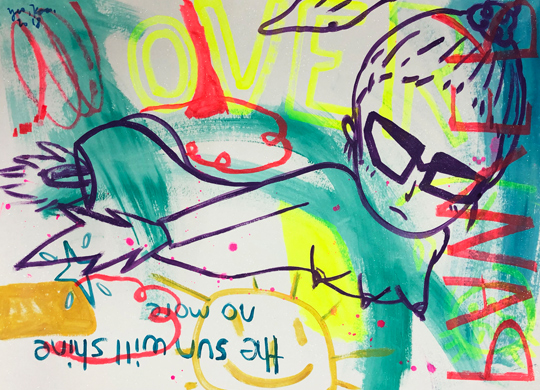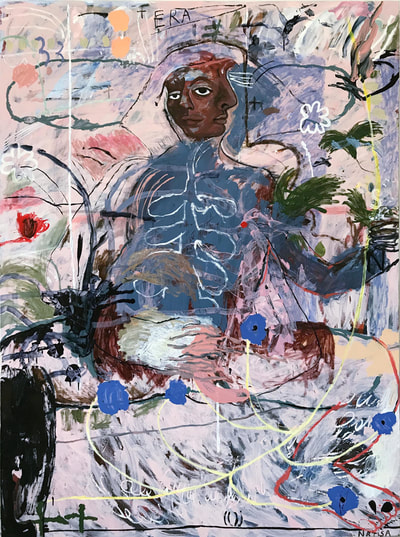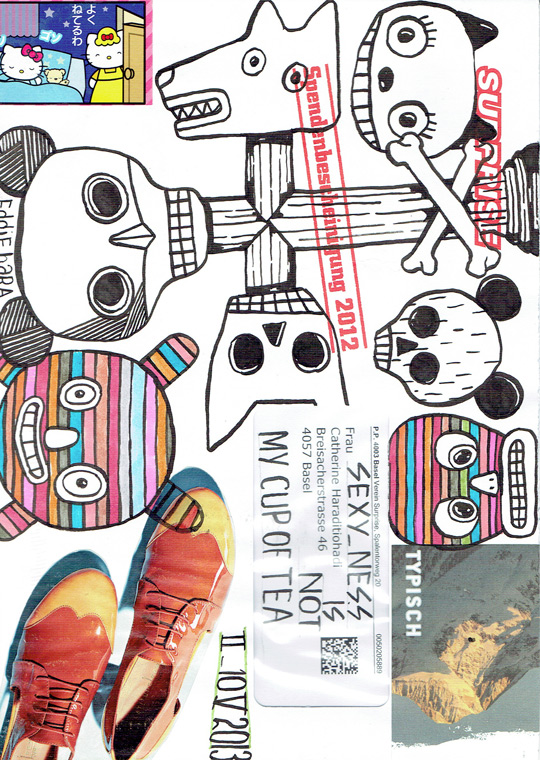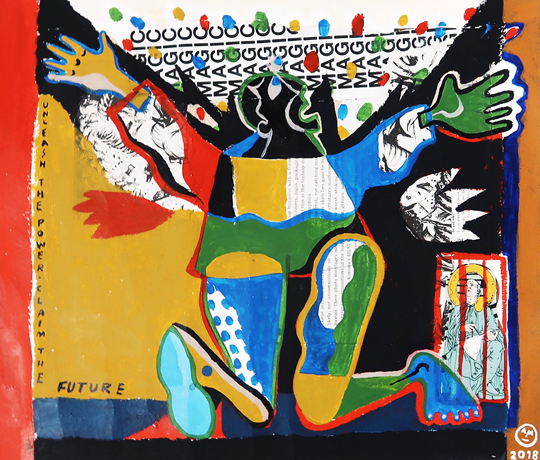Artists Interpretations of 'GOT PAPER?' RUCI Art Space Exhibition 2018
This article was written during my internship as a Gallery Intern at RUCI Art Space, talking about the works of five artists displayed at 'GOT PAPER?' RUCI Art Space Exhibition 2018.

Filled with soft and pastel colors, Yeo Kaa's works might seem like an imaginative creation of children’s fantasy. Decorated with little doodles and mainly using a cartoon look-alike character in her works, the paintings seem to be innocently engaging at first. However, if one is taking a closer step, displeasing scenes and disturbing figures are the prominent messages that lie beneath it. Murders or slaughters scene are often found in lots of her works, unlikely combined with a wide smile and sparkly candy eyes on a little girl’s face. Aside from a sense of blood, mutilation, and self-harm, depression and unpleasant feeling are also the main themes that often be shown in Yeo Kaa’s art. Captured on a naked figure of a girl, her paintings revolve around a surrealistic experience of the combination between a human’s bizarre mind and the contradiction of innocence within it. Her works also explore the strange human nature that is rarely be talked about: the desire and crave of unpleasant imagination, covered by a sweet innocent face in the human world. In general, her works could be interpreted as the extension of the artist’s deeper conscience, while it could also be interpreted as a disturbingly raw expression of human’s inner sense. They deeply pictured a representation of human complexity through pain and suffering that goes within the darkest spot of one’s mind.

Generally combining dark and soft colors, Natisa Jones’s works mainly represent the artist’s inner mind and perception of the world she lives in. With dull eye bags and bland expressions, her painting’s characters are the symbolic interpretation of confusion and loud voices that echo through the human’s mind. Even though her works reveal the personal meaning of her past childhood experiences or her mind, her works are also exposing raw human emotions that grow in one’s mind and identity. Blurred and messy lines that overlap with other elements in her works are capturing the indescribable chaos and bewilderment in one’s head. The mental exhaustion and heavy minds that one carries are also exposed in the various frowning faces of her works. Self-journey and discovery in human minds and lives are probably some of the most important keys or themes that live inside Natisa’s works.
Focusing on various intersecting elements, Feransis’ collage is mainly made with bold colors, catchy visual abstractions, and mostly exposing human body parts. Although he is greatly inspired by popular comics and pop art, his collage art is beyond that: his works are often seen as psychedelic illustrations that overlap and intersect between diverse lines, dots, liquids, or other various elements. Referencing comic characters, Feransis creates unique fantasy figures that are vividly alive in his imagery world. His love for Godzilla and other animation characters have widely influenced his perception and imagination—as if he has created his own vivid world inside of his mind.

Bright and bold colors like green, yellow, and pink are the main features that Eddie Hara uses to deliver his own perception and view towards the world and society he currently lives in. By creating colorful and childish shapes in his works, he implicitly added a deeper meaning regarding human entity and their interaction with their surroundings. Various creatures that represent animals, environments, or symbolic social elements have shaped his works to be a humorous, yet ironic kind of art. His works are often found with a lot of words, doodles, and little elements to fill any space on the medium he used—as if it references the complexity and crowded chaos that exist in society. Moreover, his graffiti and street art style could be linked with the subculture life of youth and freedom of expression. Thus, his works are the creation of a vivid, strong imitation of urban society and pop culture that has long influenced his path.

Using canvas and paper as his personal space of freedom, Abenk Alter pours out his lively imagination with the dominance of bold white lines and neon colors decorated on his medium. Heavily influenced by pop culture, his works are pure creations of his fantasy in the way he connects to himself and the world. By filling up such doodles and human figures through lines and symmetrical shapes, he transforms his imagination into a mesmerizing pop world that’s intriguing. His expressionism art and adolescent playful traits that are implemented throughout his works are the medium he used to release himself from reality. Furthermore, his colorful works are the prominent tool and expression to keep him from being restrained from the monochromatic world.
